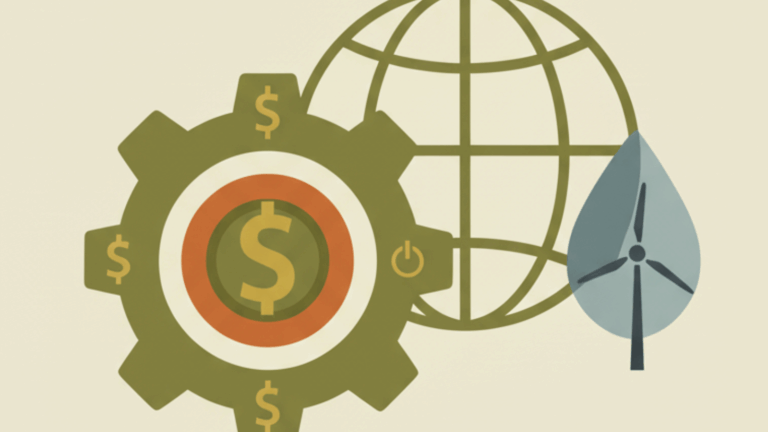Could a strategic lithium reserve kickstart US supply chain development?
NEW YORK -- A strategic lithium reserve is being mooted as a solution to stabilize volatile prices that have hindered American mining projects, allowi
Current Access Level “I” – ID Only: CUID holders, alumni, and approved guests only
Q&A by Luisa Palacios, Robert (RJ) Johnston & Antoine Halff • May 11, 2022
On May 4, Ursula von der Leyen, president of the European Commission, announced a proposal to ban EU imports of Russian oil, which would be phased out within six months for crude and by year-end for refined products.[1] The ban involves both seaborne and pipeline imports. Attention has been primarily focused on crude, but the potential implications for petroleum products such as diesel, gasoline, and fuel oil are considerable.
Dr. Luisa Palacios, Dr. Robert Johnston, and Antoine Halff, senior research scholars at the Center on Global Energy Policy, discuss the proposed ban’s likely impact on refined product markets, specifically diesel, and why Latin America in particular is positioned to lose out. The conversation then turns to the secular shift in refining capacity from Organization for Economic Co-operation and Development (OECD) countries to emerging economies, and the broader geopolitical implications of the globalization of product markets that the invasion of Ukraine has brought into sharp relief.
How would the proposed EU ban on Russian oil impact petroleum refined product markets?
The impact on refined product markets could be as severe as that on crude oil markets.
Which refined products would be most impacted by this ban?
Within the refinery complex, the ban would affect diesel and fuel oil more than gasoline.
Beyond Europe, which regions/countries would be most impacted?
Although the proposed oil ban would most directly affect EU countries, European efforts to find alternatives to Russian exports would have ripple effects across product markets. Perhaps no region would be more impacted than Latin America.
Figure 1: US diesel exports by destination (2000-2021).

What about the refining industry and the geopolitics of the refining market?
The authors would like to thank Diego Rivera Rivota and Tatiana Mitrova for their input and help with statistics.
Notes
[1] Ursula von der Leyen, “Speech by President von der Leyen at the EP Plenary on the Social and Economic Consequences for the EU of the Russian War in Ukraine – Reinforcing the EU’s Capacity to Act,” May 4, 2022, European Commission, transcript, https://ec.europa.eu/commission/presscorner/detail/en/speech_22_2785.
[2] IEA, Energy Fact Sheet: Why Does Russian Oil and Gas Matter?, March 21, 2022, https://www.iea.org/articles/energy-fact-sheet-why-does-russian-oil-and-gas-matter.
[3] IEA, Russian Supplies to Global Energy Markets, February 2022, https://www.iea.org/reports/russian-supplies-to-global-energy-markets.
[4] OPEC, Annual Statistical Bulletin 2021, Oil Data Downstream, April 2022, https://asb.opec.org/ASB_Charts.html?chapter=132.Error! Hyperlink reference not valid.
[5] IEA, Oil Market Report, April 2022, https://www.iea.org/reports/oil-market-report-april-2022.
[6] See Russia’s customs statistics service at http://stat.customs.ru/.
[7] In Europe, Russian HSFO was widely used as bunker fuel until 2020, when new sulfur standards from the International Maritime Organization shifted demand to lower-sulfur fuels. HSFO is still burnt by those ships that have been retrofitted with scrubbers to capture its sulfur emissions.
[8] bp, Statistical Review of World Energy, 70th edition, 2021, https://www.bp.com/content/dam/bp/business-sites/en/global/corporate/pdf….
[9] The White House, “FACT SHEET: United States Bans Imports of Russian Oil, Liquefied Natural Gas, and Coal,” press release, March 8, 2022, https://www.whitehouse.gov/briefing-room/statements-releases/2022/03/08/fact-sheet-united-states-bans-imports-of-russian-oil-liquefied-natural-gas-and-coal/.
[10] “Russia’s Idle Primary Oil Refining Capacity Hits All-Time High in April,” Reuters, April 29, 2022, https://www.reuters.com/article/russia-oil-refining/russias-idle-primary-oil-refining-capacity-hits-all-time-high-in-april-idUSL3N2WR348.
[11] IEA, Oil Market Report, March 2022, https://www.iea.org/reports/oil-market-report-march-2022.
[12] For an earlier analysis of some of the consequences of this secular trend, see Antoine Halff, “The Impact of Refining Sector Changes on Patterns of Oil Product Trading,” Oxford Energy Forum 92 (May 2013): 4–5, https://www.oxfordenergy.org/wpcms/wp-content/uploads/2013/07/OEF_92.pdf.
[13] Before this crisis, McKinsey was expecting closures of about five million b/d in the next five years in advanced economies to compensate for the significant ramp-up of refining capacity in emerging markets. Emily Billing, Tim Fitzgibbon, and Alexandre Ferro, Global Downstream Outlook to 2035, McKinsey, June 1, 2021, https://www.mckinsey.com/industries/oil-and-gas/our-insights/global-downstream-outlook-to-2035.
[14] EIA “U.S. Renewable Diesel Capacity Could Increase due to Announced and Developing Projects,” Today in Energy, July 29, 2021, https://www.eia.gov/todayinenergy/detail.php?id=48916#:~:text=Several%20former%20petroleum%20refineries%20plan,b%2Fd)%20in%202023.
[15] IEA, World Imports of Primary and Secondary Oil Products, 1972-2019, last updated August 10, 2021, https://www.iea.org/data-and-statistics/charts/world-imports-of-primary-and-secondary-oil-products-1972-2019.
From the east to west and north to south, in red states and blue states, attention to data centers is skyrocketing in state capitals across the United States.

Libya's bid round for new oil and gas exploration and production highlights its potential revival as a major oil producer.

Economic, political, and fiscal realities have shifted energy policy priorities across the globe toward the goals of affordability and competitiveness.

Full report
Q&A by Luisa Palacios, Robert (RJ) Johnston & Antoine Halff • May 11, 2022